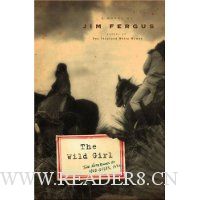| 商家名称 | 信用等级 | 购买信息 | 订购本书 |
 |
Wild Girl, The: The Notebooks of Ned Giles, 1932 |  |
|
 |
Wild Girl, The: The Notebooks of Ned Giles, 1932 |  |

Ned Giles is a 17-year-old orphan whose father's advice in a suicide note was that he should "buy himself a good camera." Ned is working in the clubhouse at the Racket Club in Chicago when one of the members posts a notice: "The Great Apache Expedition: This expedition ... plans to go into the Sierra Madre Mountains on the boundary between Sonora and Chihuahua, Mexico, to attempt to recover the seven-year-old son of Fernando Huerta?the boy having been stolen by the Apache Indians ... when three years old..." Ned decides to leave Chicago and present himself in Douglas, Arizona, where the expedition is being organized, in the hope of becoming the expedition photographer. He drives his father's Studebaker Roadster, the last vestige of his old life, and eventually fetches up in Douglas. What he finds there is every boy's dream adventure and then some.
Fergus sprinkles stock characters throughout the narrative: the hard-drinking, overweight newspaper man, Big Wade Jackson, who really does not want to put up with the hardships of the expedition and is only too happy to send Ned; Tolley, the gay preppy from Princeton, having been sent by his father in the hope that it would "make a man out of him"; Margaret Hawkins, a cultural anthropologist and Ph.D. candidate from the University of Arizona, who looks at the whole escapade as a field trip; and a mean-spirited Chief of Police, Leslie Gatlin. Into this mix are thrown two Apache guides: Grandfather Joseph Valor, wisely resigned to the world as it is and Grandson Albert Valor, Apache hothead.
The main evet of the novel is, however, La Ni?a Bronca, the wild girl of the title. She is treed by the hounds of Billy Flowers, who heard the Voice and left home and hearth to become a hunter of predators. He takes her to Douglas, bound hand and foot, and she is thrown in a jail cell. She bites anyone who comes near her, but Ned is finally able to wash and feed her. And so begins the central relationship of the story. It is decided that the expedition will trade this girl for the Huerta boy. Turns out that isn't as easy as it sounds.
There is a wraparound story here that is utterly meaningless--author's notes, a prologue, an epilogue, the author's apology to the Apache people and all sorts of extraneous claptrap that is needless clutter. The basic narrative is a good one; stay with that. --Valerie Ryan
专业书评 From Publishers Weekly
Starred Review. Depicting the dusty Depression-era West this grandly, cinematically imagined sweat- and bloodstained saga, inspired by events that took place in Arizona and south of the border in the Sierra Madre badlands, dramatizes latter-day conflicts between whites and Native Americans. During the fall of 1999, an obscure, financially struggling photographer, Ned Giles—now in his early 80s—sells, for $30,000, La Niña Bronca, his only copy of a photo of a young Apache girl lying on the rude floor of a Mexican jail cell; the buyer's curiosity about the picture's provenance sparks Ned's memories. The rest of the book, set in 1932, reveals a legacy of heroism and lost love through Ned's scrupulously detailed diaries, which vividly recount a nightmare of harrowing misadventures beginning the day he signs on to be a part of the Great Apache Expedition, one of dozens of men hoping to free the son of a wealthy Mexican rancher kidnapped by the Apaches. (The wild Apache girl will be used as ransom.) The narrative unfolds as a series of flashbacks, intermingling short passages from the third-person POV of the fierce Apache girl and first-person excerpts from the diaries of the 17-year-old Chicagoan photographer on his first big assignment. Fergus (One Thousand White Women) makes unforgettable characters move against vivid landscapes in this laudable encore. Agent, Al Zuckerman at Writers House. 5-city author tour. (May)